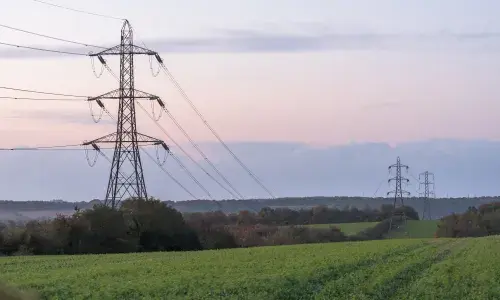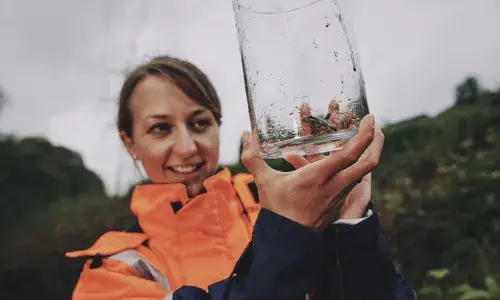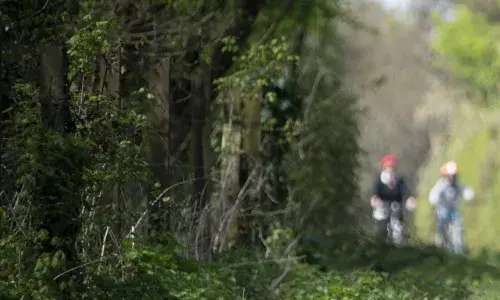
Northwick Road reinstatement complete after ‘Ratty’ temporarily delays works
Works delayed as water vole burrows found on site
Originally programmed for the summer, National Grid’s contractor, Balfour Beatty, held back on reinstatement work at Northwick Road, to the north west of Mark until this Autumn after discovering water vole burrows on site.
The engineering team had planned to remove the two culverts in the area in August. Ahead of starting any construction, ecological surveys are carried out and measures put in place to reduce disruption to local wildlife. Water voles were not identified during initial ecological surveys and monitoring of the works to install the culverts, but had appeared since.
Balfour Beatty’s expert on-site ecologist carried out further checks and identified several burrows in the ditches where the work to remove the culverts was about to start. The ecologists inspected each burrow and confirmed the presence of water voles. Work was immediately stopped to prevent damage to the burrows, and any harm to the water voles.
We’re committed to completing our work while safeguarding the wildlife on our sites.
Next, Balfours submitted an amendment to the water vole application licence to Natural England and the licence to undertake the mitigation works from mid-September to mid-October, was received from Natural England in early September. Once the water vole mitigation and displacement has been completed, the reinstatement works are clear to continue.
Using observation methods such as endoscopy, where an endoscope is used to look inside the burrows, our teams determine whether any water voles call the burrow home. Once the burrows have been confirmed as containing water voles, mitigation is the undertaken as per the licence. This includes displacement in the form of strimming under ecological supervision. A monitoring period of 7 days is then followed. Suitably qualified ecologists are then able to hand-dig the burrows to displace and relocate the water voles. This ensures the water voles cannot return to the burrow, and relocated them outside of the work area, preventing any harm from coming to them during our work.

Only when our ecologist safely determines that the water vole mitigation works were successful do we continue with our construction activity.
The work to remove the culverts and reinstate the temporary construction entrances on Northwick Road was successfully completed in October.
Holly Poulton, Senior Environmental Advisor for Balfour Beatty commented, “We’re committed to completing our work while safeguarding the wildlife on our sites. It is vital that the safety of these protected species takes priority, even when that results in changes to the construction programme.”
What are water voles?
These elusive mammals, forever immortalised as ‘Ratty’ in Kenneth Grahams’ Wind in the Willows, were once a common sight on waterways throughout the region. However, predation from invasive American mink combined with habitat loss and fragmentation has resulted in the water vole now being considered one of Britain’s most endangered wild mammals.
Water voles and their burrows are fully protected under the Wildlife and Countryside Act and we are working hard to ensure we protect their habitat while we carry out our work. Wherever possible we are avoiding working in areas where there are water voles present. Where this isn’t possible our specialists, following guidance from Natural England, have developed detailed mitigation plans that include removing riverside vegetation and encouraging the voles to relocate, and then removing their burrows when they are safely out of harm’s way to prevent the animals’ return once works start.
Find out more about how we’re working with Bristol Avon Rivers Trust (BART) and Somerset Wildlife Trust (SWT) to protect this endangered species.


